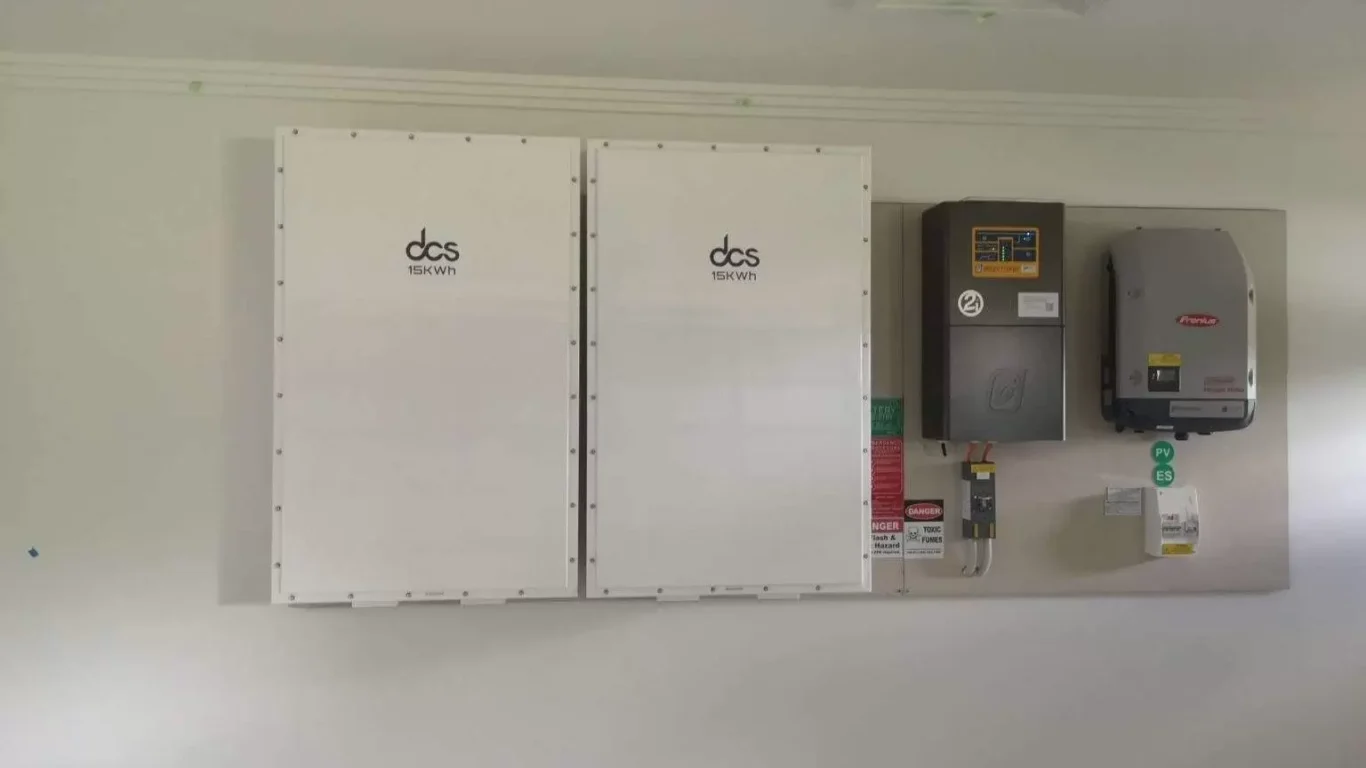Powering Up: Exploring the Batteries for Off Grid Solar Power

In the world of renewable energy, solar power has emerged as one of the most popular and efficient sources of electricity. With the increasing demand for sustainable and eco-friendly solutions, many people use off-grid solar power systems to power their homes and businesses. However, one crucial component of these systems is the battery. Choosing suitable batteries for off grid solar power ensures a reliable and uninterrupted power supply. In this blog post, we will explore the best batteries for off-grid solar power and how they can help you harness the full potential of solar energy.
Understanding Off-Grid Solar Power Systems
An off-grid solar power system is a self-sufficient energy setup that operates independently from the national electricity grid. This system is particularly beneficial for remote areas where grid connection could be more practical and inexpensive.
It comprises several key components: solar panels, which capture sunlight and convert it into electricity; charge controllers, which regulate the flow of electricity to the batteries; inverters, converting the stored DC electricity in the batteries to AC electricity for use in household appliances; and crucially, batteries to store the surplus electricity generated.
These systems harness the sun’s power during the day, store it in batteries, and make it available for use at any time, effectively ensuring a continuous supply of electricity despite the absence of sunlight, such as during the night or on overcast days. By maintaining an autonomous power supply, off-grid systems offer a sustainable and reliable alternative to traditional power sources, particularly in locations where the grid is unreachable or unreliable.
The Different Types of Batteries Available
Navigating through the myriad options of batteries for off-grid solar power necessitates an understanding of the distinct types available in the market. Primarily, these include lead-acid, lithium-ion, and nickel-cadmium. Traditionally favoured for their cost-effectiveness, lead-acid batteries have been a staple in off-grid systems, though they demand frequent maintenance and have a shorter lifecycle. In contrast, lithium-ion batteries have surged in popularity, credited for their higher energy density, extended durability, and minimal upkeep.
These attributes enhance their appeal and position them as a more sustainable choice for long-term energy storage solutions. Nickel cadmium although less common, nickel cadmium presents a robust option with its notable resistance to extreme temperatures and ability to endure a wide range of charge cycles. Each type offers distinct advantages tailored to varying needs and system configurations, thus underscoring the importance of a thorough evaluation aligned with specific energy requirements and environmental conditions.
Why Lithium-Ion Batteries Are Leading the Charge
Lithium-ion batteries have emerged as frontrunners in energy storage for off-grid solar power systems, surpassing their lead-acid counterparts in several key areas. Their superior energy density means they can store more electricity in a smaller, lighter package. This is particularly advantageous in off-grid setups where space and weight can be critical considerations.
Furthermore, these batteries boast a significantly greater lifespan, often lasting twice as long as lead-acid batteries under similar conditions. This extended durability reduces the need for frequent replacements, contributing to a more sustainable and cost-effective solution over time. Another notable advantage is their lower maintenance requirement. Lithium-ion batteries are virtually maintenance-free, unlike lead-acid batteries, which necessitate regular checks and water top-ups.
This convenience factor, coupled with their ability to withstand deeper discharge cycles without sustaining damage, ensures a reliable power supply and enhances the overall efficiency of off-grid solar power systems. Their resilience to a broader range of temperatures adds to their appeal, offering dependable performance under diverse environmental conditions.
Tips for Choosing the Best Batteries for Solar Off Grid
Selecting the best batteries for solar off grid setup requires careful evaluation of various factors to ensure a match to your specific energy needs. Consider the battery’s capacity, which indicates how much energy it can store; a higher capacity is fundamental for sustaining power through periods without sunlight. Delve into the depth of discharge (DoD) specifications, aiming for a model that allows for a significant percentage of its capacity to be used without adverse effects, thus maximising energy utilisation.
Equally, a battery’s cycle life—how many charge and discharge cycles it can undergo before its capacity significantly degrades—is pivotal. Opt for batteries that promise a longer cycle life to enhance the longevity of your storage system. The initial cost is an essential factor, yet evaluating the cost over the battery’s lifetime offers a more accurate reflection of its value.
A battery with a longer life and fewer replacement needs may prove more cost-effective, even if its upfront cost is higher. Warranty terms and the maintenance regime should also influence your decision. A comprehensive warranty can provide peace of mind, while batteries that require minimal maintenance reduce ongoing effort and potentially additional costs.
The Importance of Battery Capacity and Depth of Discharge
Understanding the nuances of battery capacity and depth of discharge (DoD) is paramount in off-grid solar power systems. Battery capacity, measured in kilowatt-hours (kWh), denotes the total energy stored within a battery. This figure is crucial for gauging how much power is available to meet daily energy needs during periods devoid of sunlight or high-demand situations.
On the other hand, depth of discharge is a critical metric that defines the extent to which a battery’s stored energy can be utilised before recharging is necessary. A higher DoD percentage indicates that a more significant portion of the battery’s capacity can be used without negatively impacting its longevity or performance.
Ensuring a battery has a high DoD allows for more efficient energy utilisation, enabling users to maximise their off-grid system’s potential. Selecting batteries with an optimal blend of high capacity and deep discharge capability is vital for achieving a balance between operational demands and the system’s sustainable energy management, especially in environments where energy needs fluctuate or are predictably high.
Innovations in Solar Battery Technology
The landscape of solar battery technology is experiencing a transformative phase, marked by significant strides in enhancing efficiency and sustainability. Solid-state batteries stand out among these advancements, offering a promising alternative to traditional lithium-ion models. Characterised by their use of solid electrolytes instead of liquid ones, these batteries herald a new era of safety and energy density, potentially revolutionising how energy is stored in off-grid systems.
Furthermore, the integration of artificial intelligence (AI) into battery management systems heralds smarter, more adaptive control over charging and discharging processes, optimising performance and extending lifespan. Another noteworthy development is the advent of eco-friendly materials in battery production, aimed at reducing environmental impact without compromising capacity or durability. These innovations, collectively, not only underscore the commitment to overcoming existing limitations but also pave the way for more resilient, efficient, and sustainable off-grid solar power solutions.
How to Calculate Your Solar Power Storage Needs
Determining the precise storage requirements for your off-grid solar power system is crucial to ensure uninterrupted energy supply. Begin by assessing your daily energy consumption; this involves recording the energy usage of all electrical appliances and devices in your home or business over a set period. It’s essential to factor in both your peak and average energy usage to accommodate days of higher demand.
Next, evaluate the efficiency of your solar panel setup, which influences the amount of electricity generated and, consequently, the capacity needed in your storage system. Consideration of your location’s geographical and climatic conditions is also vital. Areas with fewer sunny days will require a larger storage capacity to compensate for the reduced solar energy generation.
Similarly, if your region experiences long winters or extended periods of overcast weather, your storage needs will increase to maintain a steady power supply. Factor in any additional energy sources you have. If you’re supplementing your solar power with wind energy or a diesel generator, this could reduce your storage requirements. By methodically analysing these factors, you can ascertain the size of the battery bank required to meet your energy needs reliably.
Maintenance Tips for Solar Batteries
Ensuring the longevity and efficiency of your solar batteries, particularly within off-grid systems, necessitates regular and attentive maintenance. Here are some crucial tips for maintaining your solar batteries:
Regularly Check the State of Charge (SoC)
Utilise a battery monitor to check the state of charge of your batteries regularly. Keeping them adequately charged prevents the degradation of battery cells, extending their lifespan. It is essential to allow your batteries to fall into deep discharge only sometimes.
Keep Batteries at an Optimal Temperature
Batteries are sensitive to extreme temperatures, significantly impacting their performance and lifespan. Store your batteries in a location that maintains a stable, moderate temperature. Avoid exposure to extreme cold or heat, which can accelerate wear and reduce efficiency.
Clean Terminals and Connections
Ensure that the battery terminals and connections are clean and free from corrosion. Corrosion can lead to poor conductivity and increased resistance, hindering the performance of your off-grid solar power system. Use a mixture of bicarbonate of soda and water to clean any corrosion and ensure all connections are tight and secure.
Equalise Your Batteries Regularly
If you’re using lead-acid batteries, periodic equalisation is necessary. This process involves slightly overcharging the batteries to ensure all cells are equally charged. Equalisation helps remove sulphation on the plates, balance the battery, and restore total capacity. To avoid damage, follow the manufacturer’s guidelines for the frequency and duration of equalisation.
Cost-Effectiveness of Investing In the Best Batteries for Off Grid Solar Power
Investing in high-quality batteries for off-grid solar power systems presents a financially viable option in the long run, especially considering the independence it grants from traditional energy sources. Despite the substantial initial outlay, the benefits, including reduced electricity bills and minimal maintenance costs, contribute to a cost-effective energy solution over time. Modern batteries’ durability and extended lifespan, particularly lithium-ion types, mean the replacement frequency is significantly lessened, further enhancing the investment’s value.
The ability to store excess solar energy during peak times can lead to considerable savings, circumventing the higher rates charged during these periods. With the ongoing advancements in battery technology, their efficiency continues to improve, ensuring a greater return on investment by maximising the utilisation of generated solar power. As such, investing in the best batteries for off grid solar power systems supports a sustainable lifestyle and offers a prudent financial strategy for energy management in the long term.
Conclusion
In summarizing our exploration of batteries for off-grid solar power, it’s evident that the right choice significantly influences your solar energy system’s efficiency, reliability, and sustainability. With advancements in battery technology constantly evolving, options like lithium-ion batteries stand out for their longevity and maintenance ease, presenting a compelling choice for those venturing into off-grid solar power. However, the final decision should align with individual energy needs, environmental considerations, and budget constraints. As we move towards a greener future, the role of batteries in off-grid solar systems becomes ever more crucial, empowering users to maximise the benefits of solar energy.
FAQs
What types of batteries are used for off-grid solar power systems?
Deep-cycle lead-acid batteries, including flooded and sealed lead-acid batteries, are the most common types used in off-grid solar power systems. Lithium-ion batteries, which have a higher energy density and longer lifespan, are also becoming increasingly popular.
How do batteries for off grid solar power differ from regular batteries?
Batteries for off grid solar power systems are designed to withstand deep discharges and recharge cycles, making them ideal for storing solar energy. Unlike regular batteries, they are optimised for long-term use in renewable energy applications.
What factors should be considered when choosing batteries for off-grid solar power?
Factors such as capacity, voltage, cycle life, and temperature tolerance should be considered when selecting batteries for off-grid solar power systems. Additionally, the cost per kilowatt-hour of stored energy and the batteries’ maintenance requirements are important considerations.
How long do batteries for off-grid solar power systems typically last?
The lifespan of batteries for off-grid solar power systems varies depending on factors such as battery type, usage patterns, and maintenance practices. Deep-cycle lead-acid batteries typically last 5 to 15 years, while lithium-ion batteries can last 10 to 20 years with proper care.
What maintenance is required for batteries in off-grid solar power systems?
Regular maintenance is essential to ensure batteries’ optimal performance and longevity in off-grid solar power systems. This includes monitoring and maintaining proper electrolyte levels (for flooded lead-acid batteries), equalising charges, and keeping the batteries clean and corrosion-free. Additionally, it’s important to avoid overcharging or over-discharging the batteries, as this can significantly reduce their lifespan.
| Related Business Listings |
| Contact Directory |
| Local Business Profiles |



